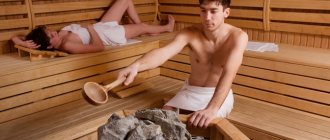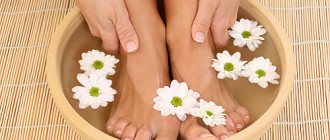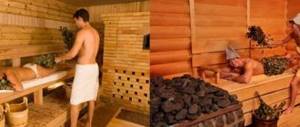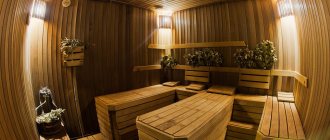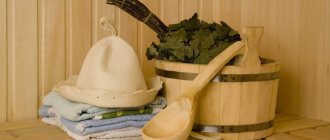A steam room that bathes a person in heat can be perceived as a universal and effective remedy for diseases. Many believe that bath procedures are not inferior to medical heating and inhalations in terms of impact. Since ancient times, people have gone to steam baths to recover from various diseases, including the respiratory system. But is a bath really useful for bronchitis? And which option to prefer - a bathhouse or a sauna for bronchitis? The difference in the impact of these types of steam rooms on the human body is enormous, and not both of them are equally good for treating the disease. However, going to the steam room itself must be pre-approved by the attending physician, since not at every stage of the disease with bronchitis you can go to the bathhouse.
There are a number of universal recommendations that will help improve your well-being and not cause harm if you are planning to go to the steam room with bronchitis. In addition, there are strict requirements for visiting the steam room if you have other pulmonary diseases. With each diagnosis, the effect of high temperatures and steam on a sick body can be positive or negative, so it is important to carefully study all the recommendations so as not to aggravate the situation.
Briefly about the main thing
According to statistics, this is one of the most common diseases, caused by infection (but doctors have also recorded non-infectious cases) and affects the bronchi.
The bronchi are one of the most important parts in the respiratory system. The inhaled air first passes through the larynx and trachea, and then through branched tubes of various sizes (bronchi) into the lungs. When you exhale, carbon dioxide moves in the opposite direction.
The bronchi are covered with mucus and small cilia with high sensitivity, ensuring the release of various substances trapped in the bronchi. Thus, bronchitis is an inflammation of the mucous membrane, which causes the walls of the bronchi to become thicker, mucus is released when coughing, the temperature rises, and there is a feeling of lack of air.
Researchers have found that bronchitis is caused by various microorganisms that enter the lungs through airborne droplets. They stimulate infection, causing irritation and fever. The development of bronchitis can be provoked not only by unfavorable external factors, for example, weather or hypothermia, but also by a predisposition and addiction to nicotine.
Medicine knows two forms of the disease, each with its own recommendations regarding baths for bronchitis.
What is the healing secret of the Russian bath?
This is what inflamed bronchi look like.
In the bathhouse, the bronchi expand and drainage in them increases, sputum is discharged and a dry, debilitating cough stops, shortness of breath decreases, and wheezing disappears. Inhaling warm air is a beneficial natural inhalation. The alveoli and bronchi of the lungs work more intensely when inhaling warm air. Swelling of the bronchi decreases, and the epithelium is restored. This leads to self-cleaning of the body’s respiratory system and recovery.
The bathhouse heals the circulatory system, dilating blood vessels, improving the supply of oxygen to tissues and cells. Vessels are strengthened and cells are restored. The body is cleansed of toxins and waste by opening the skin pores. Metabolic processes throughout the body are accelerated. Therefore, a person visiting a bathhouse feels great.
Bronchitis in acute form
In this form, the disease occurs with characteristic pain in the abdominal area and sternum, as well as a runny nose, weakness and dizziness. Acute bronchitis is accompanied by a severe chest cough with sputum and high fever. At the beginning of the disease, the cough is dry; with proper treatment, after a couple of days, phlegm and mucus will begin to come out along with the cough.
The signs of acute bronchitis can be confused with acute respiratory viral infections and acute respiratory infections; at the onset of the disease they have common features.
Chronic bronchitis – “smoker’s bronchitis”
The chronic form is characterized by a sluggish nature, in this case the inflammation progresses, and the tube cleaning mechanism, that is, the work of sensitive cilia, fails. The bronchi become clogged with mucus and phlegm. The debilitating cough that accompanies the disease can torment the patient for several months. As well as a runny nose and general malaise, often headaches and dizziness, a feeling of lack of air.
The most common cause of chronic bronchitis is smoking; smoke and tars negatively affect the functioning of eyelashes and mucus production. Chronic bronchitis is also called a smoker's disease and its symptoms include:
- Frequent cough;
- Sputum production;
- Dyspnea;
- Characteristic difficulty breathing.
- Symptoms of chronic bronchitis can be compared to a cold or flu: cough, deterioration of health, runny nose, headache and dizziness.
Therapeutic procedures in the bath: use of a broom, massage, herbs and essential oils
essential oils can be poured onto the stones in the sauna
Broom and massage
A broom and massage enhance the healing effect of visiting a bathhouse by improving blood circulation. Massage of the body and feet with active points is useful. For massage or just to soar the body, brooms made of birch, eucalyptus, and oak are suitable. Wraps and masks in the bath are also very effective.
Herbs
The following herbs are suitable for brewing healing infusions in the bath: linden and oregano, mint, thyme, sage, rose hips, celandine and chamomile. The correct way to brew herbal tea is as follows: 2-3 tbsp. Pour spoons of herbs not with boiling water, but with water at a temperature of 80 degrees, leave for 10-15 minutes.
Essential oils
To make the air in the steam room therapeutic, drop essential oil diluted in a ladle of water or herbal decoction for inhalation onto the stones. Hang brooms made of medicinal herbs in the steam room. The aromas of eucalyptus, mint, tea tree, fir, pine and citrus oils are beneficial for breathing.
If you have a respiratory disease in the bath, warm your feet in a basin using mustard or herbal decoctions. This procedure will help get rid of a runny nose.
Drinking after the bath
After the bath, you need to lie under a warm blanket in bed for 10 minutes and drink herbal tea with honey.
Is it possible to wash in a bathhouse if you have bronchitis?
So, if for acute respiratory viral infections, acute respiratory infections and common colds, bath procedures are even recommended, because under the influence of high temperatures and moisture, basic physiological processes are enhanced, ensuring a speedy recovery, then is it possible to visit a bathhouse with bronchitis?
In the acute form of the disease, even if there is a slight increase in body temperature and slight malaise, you cannot visit the steam room, warm up or simply wash in the bathhouse! This can only worsen the patient's condition.
The high temperature in the bath will cause an increase in body temperature, and the heat of the bath will cause further development and progression of the infection.
Due to a visit to the bathhouse during acute bronchitis, the disease may take on a different form, for example, bilateral pneumonia.
Therefore, the answer to the question “Is it possible to go to the bathhouse with bronchitis?” - an unequivocal and firm no.
The effects of different types of steam rooms on the body
If you are faced with a choice whether to go to the bathhouse with bronchitis or prefer a sauna, then the answer will be clear: choose a traditional Russian bathhouse. Let's figure out why. Of course, visiting a sauna with this disease is acceptable, but the effect will not be as favorable.
The Finnish sauna is characterized by very high temperatures and dry air. But it does not have as good an effect on sputum separation as a steam room with high humidity. It is not for nothing that bronchitis is often treated with inhalations. And the high temperature will warm the body well and dilate the blood vessels. This will speed up blood circulation and improve nutrition of internal organs, including the lungs. Therefore, a certain healing effect will be achieved in a Finnish bath. The beneficial effect will be much higher if a person has previously regularly visited the sauna. After entering the steam room, be sure to sit in the relaxation room and drink warm still mineral water.
An infrared sauna is a useful alternative to a Finnish sauna. The infrared cabin effectively warms up the body, promoting a speedy recovery. But without medication prescribed by a doctor, the result will still be minimal, since the sauna in any case should be considered as an auxiliary remedy. However, it helps relieve symptoms such as runny nose, headaches, and cough. In several sessions, an infrared sauna removes toxins from the body that have accumulated during the period of illness.
The most favorable option for treating bronchitis is the traditional Russian bath. It combines several procedures that help to quickly recover from this disease:
- high air temperature, warming the body;
- steam, which is an alternative to inhalation;
- massage with aromatic brooms.
Thanks to the heat, the smallest capillaries in the body become more permeable, and each cell is enriched with oxygen. The pores expand, and through them, accumulated toxins are eliminated faster through sweat. When the body has steamed, massage your back and chest well with a broom. This procedure will help the person breathe and stimulate mucus production. Massaging, while inhaling, go down from the chest to the back, while exhaling, move in the opposite direction.
Due to the dilation of blood vessels, blood moves through them faster, and the heart speeds up its rhythm. The person begins to breathe deeper, the bronchioles and alveoli in his lungs open. Mucociliary function is normalized, the epithelium of the bronchial tree begins to cleanse and regenerate. The muscle fibers of the bronchi gradually relax, their swelling subsides, after which the mobility of the chest is restored: the person feels how it becomes easier for him to breathe.
After visiting the steam room, bronchospasms decrease, sputum begins to become more active and clear better, wheezing and shortness of breath disappear.
Bath after bronchitis
Is it possible to go to the bathhouse if you have bronchitis without fever? After an illness, it will be a useful addition to the treatment complex. If allergic reactions are not observed, and the body temperature has returned to normal, but a cough and slight sputum production remain, then the bath will only be beneficial, significantly alleviating discomfort, warming up the lungs and bronchi.
Is it possible to take a steam bath if you have bronchitis? With caution, without fanaticism and additional contrasting procedures, such as diving into an ice hole, wiping with snow or dousing with cold water. And also, after the steam room, you should not go into a cold room; when going out to the dressing room to cool down, it is recommended to wrap yourself in a towel or sheet. Temperature contrast can lead to complications.
To get rid of a cough faster, it is recommended to steam with linden or pine brooms. The optimal procedure time is no more than 10 minutes.
As for the chronic form, you can go to the bathhouse with bronchitis without fear. Elevated temperature affects the smoker’s disease differently than the acute form: blood circulation increases, along with the blood oxygen enters the bronchi, which has a positive effect on the resorption of adhesions and the dilution of accumulated sputum.
After the procedures, it is much easier to breathe, because warm steam and increased temperature in the bathhouse affect the respiratory tract better than inhalation, clearing the bronchi of mucus.
Aromatherapy in a bathhouse is one way to enhance the effect. It is recommended to pour boiling water over pine, juniper, fir and leave. During bath procedures, the concentrate is poured onto the heater: the result is an aromatic, therapeutic inhalation to cleanse the bronchi.
A wet steam bath for bronchitis without fever will bring significant benefits in the fight against the disease, but it is recommended not to overdo it when trying to get better quickly and before visiting, make sure that the inflammatory process has gone away and the body temperature does not exceed normal values.
For what diseases is a bath prohibited?
Visiting the bathhouse is not recommended or prohibited if you have:
- Epilepsy, convulsive syndromes;
- Bronchitis and other diseases in acute stages;
- Temperature above 37 degrees;
- Pustular skin lesions;
- Oncological diseases;
- Heart disease;
- Encephalopathy;
- Open wounds on the body;
- After a stroke or heart attack, visit the bathhouse no earlier than a month;
- During the flu;
- Weakness and dizziness;
- During pregnancy;
- Visiting the bathhouse is possible, but with caution in case of hypertension, angina pectoris, rapid heartbeat and shortness of breath. In case of these diseases, it is better to wash, but not to take a steam bath.
Sauna
Doctors have a different opinion about the sauna: despite the fact that the bathhouse and the sauna are “close relatives,” the principle of operation is completely different. In a sauna the air is hot and dry, while in a bathhouse hot, wet steam dominates. Even in its chronic form, a sauna will cause painful sensations: the inhaled dry and hot air will provoke severe coughing attacks and pain in the chest; such procedures will not bring relief.
Of course, the bronchi will warm up quite well, but the healing effect comes from the damp bath steam. Is it possible to go to the sauna if you have bronchitis? – Yes, but you shouldn’t expect a therapeutic effect. However, after recovery, you should not deny yourself the pleasure of visiting the sauna - this is an excellent prevention of bronchial disease.
How to visit a steam room for health benefits
The steam room will be beneficial if you do not violate the visiting rules:
- Time spent in the steam room is no more than 10 minutes;
- Enter directly into the steam room from 1 to 3 times;
- When in the steam room, protect your head from heat stroke with a hat or towel;
- It is better not to stand in the bathhouse, but to lie or sit;
- When entering the steam room, take a warm shower;
- When calculating the time spent in the steam room, you need to take into account the individual characteristics of the body, temperature and humidity;
- Before going to the bathhouse, it’s good to drink a glass of water, or better yet, herbal or green tea. This will increase sweating, and the body will more intensively cleanse itself of waste and toxins;
- You cannot go to the bathhouse on a full stomach, after eating fatty and heavy food;
- You cannot visit the bathhouse hungry and dehydrated;
- Contrasting douches and running out into the cold do not work well, as they create spasms in the bronchi and interfere with their recovery;
- It is prohibited to drink alcohol and cold drinks;
- You can’t immediately go outside after a bath; your body needs to cool down.
Bath for bronchitis in a child
Just like adults, children can go to the bathhouse after their temperature returns to normal. To combat a cough, damp bath steam is what you need. You should not be afraid of a light massage with a broom. However, it is recommended to reduce the soaring time and not lie on the top shelves. You can’t even harden yourself; it’s best to do this after complete recovery. You can let your child go outside or into a cold room completely dry.
The bathhouse is an ancient Russian procedure against most ailments: warming up and aromatherapy based on medicinal herbs can relieve coughs and warm up the lungs, however, you should not be zealous, otherwise the acute form will turn into dangerous bilateral pneumonia. It is impossible to answer clearly whether a bath is good or bad for bronchitis; if you want to visit a bath, you need to make sure that your body temperature has returned to normal and that inflammation has passed.
To enhance the effect after the bath, it is recommended to drink an aromatic infusion of linden flowers or black currants.
How can you enhance the healing effect of visiting a bathhouse?
In the baths, various plants are used in the form of brooms for massage and self-massage. To enhance the therapeutic effect, it is recommended to use an oak or birch broom.
You can add a few drops of essential oil of eucalyptus, tea tree, pine - plants with antimicrobial activity (contraindicated if the patient is prone to allergies) to the water or on hot stones.
Before visiting a bath or sauna, you can drink an infusion of rose hips, thyme, sage, linden blossom or St. John's wort. To prepare an infusion, any of the above ingredients is poured with hot water (approximately 80 °C), left for 10 minutes, and then filtered.
While in a bath or sauna, you can drink warm infusions or decoctions of medicinal herbs. To prepare a medicinal decoction, take 4 parts of coltsfoot, 3 parts of licorice root, marshmallow, plantain leaves, 2 parts of thyme, fennel berries, peppermint and 1 part of sweet clover. Mix all ingredients, pour 2 tablespoons of the resulting mixture into 500 ml of boiling water, keep in a water bath for about 20 minutes, then strain the broth and dilute with 1 liter of warm water.
After suffering from bronchitis, a child is not recommended to visit a bathhouse or sauna until the body is completely restored, as obstructive syndrome may occur.
You can prepare an infusion from the leaves of plantain, coltsfoot, primrose flowers, and horsetail grass taken in equal parts. All ingredients are mixed, after which a teaspoon of the resulting mixture is poured with a glass of boiling water and left for 30 minutes. The liquid must be warm; soft drinks in a bathhouse or sauna are not recommended for patients with bronchitis.
Development of bronchitis
Pathology in the bronchi appears for various reasons. Most often, this is the infectious and allergic nature of the disease. Bronchitis also occurs after exposure to chemical substances on the mucous membrane, poor ecology, foreign bodies entering the lumens of the bronchi, and injuries to the bronchopulmonary system. We will leave injuries, the chemical influence of harmful substances and foreign bodies alone; we will consider going to the bathhouse for two main reasons: infectious and allergic.
With the development of pathology, a lot of mucus appears inside the bronchi, and because of this, their lumen decreases slightly, and microbes accumulate. The protective reflex of the bronchi - cough - comes to the rescue. This is the main symptom of the disease.
Symptoms of bronchitis
Acute inflammation of the mucous membranes of the bronchial tree is accompanied by:
Treatment of the disease
Bronchitis should be treated using special symptomatic medications: antipyretics, mucoltotics, expectorants, antihistamines. It is also necessary to use drugs that affect the cause of the disease when it is known - these are antiviral and antibacterial drugs.
Traditional methods of treatment are also actively and effectively used: decoctions, herbal infusions, rubbing, inhalations and warming compresses.
Prohibitions after visiting the sauna
In order to get the maximum benefit from visiting a bathhouse, you should perceive it not as entertainment, but as a very effective and beneficial procedure. For many people, a sauna is associated with drinking strong drinks and various snacks, but they only negate the entire positive effect.
After visiting the sauna you should avoid the following foods and drinks:
- beer and smoked foods - they contribute to aggravation of digestive tract problems;
- crackers and chips, soda, as well as semi-finished products - the body becomes clogged with harmful substances.
It is best to consolidate the effect of the sauna with a healthy decoction with the addition of honey, as well as a pleasant back massage.
Herbs are the basis of bath procedures
Everyone is familiar with the healing properties of herbs. If the patient does not have an allergic reaction to them, then he is strongly recommended to supplement his visit to the bathhouse by taking products based on them.
Healing herbs are the basis of bath procedures
You can use different complexes, but the most optimal one includes:
- Rose hip;
- Chamomile;
- Thyme;
- Sage;
- St. John's wort.
Bronchial asthma
Bronchial asthma is clinically manifested by attacks of suffocation or their analogues (cough, chest discomfort, etc.). These attacks are triggered by contact with a substance to which the patient is allergic. In the infection-dependent form, attacks of suffocation become more frequent with exacerbations of bronchitis and activation of respiratory tract infection. There is an opinion that over time, asthma always turns into an infection-dependent form. Sometimes people suffering from bronchial asthma try not to visit the bathhouse and sauna at all, considering them harmful for their illness.
Contraindications
Children under 3 years of age, those who are sick during exacerbation of illnesses, fever, and pregnant women should not take a steam bath without a doctor’s recommendation. Even a low-grade fever is a reason to cancel a trip to the bathhouse.
Contraindications include:
- exacerbation of inflammatory phenomena in the bronchi;
- allergic bronchitis;
- infection;
- diseases of the heart, blood vessels - ischemia, high blood pressure, previous heart attack;
- pulse above 90 beats/minute, blood pressure more than 140/90;
- chronic diseases - diabetes mellitus, malignant tumors, skin pustular diseases;
- epilepsy;
- pulmonary tuberculosis.
It is better for asthma patients not to go to the sauna; limit themselves to the steam room in the bathhouse, since the sauna air is too dry. If you have bronchitis, you can go to the sauna, but be sure to take a warm drink with you.
